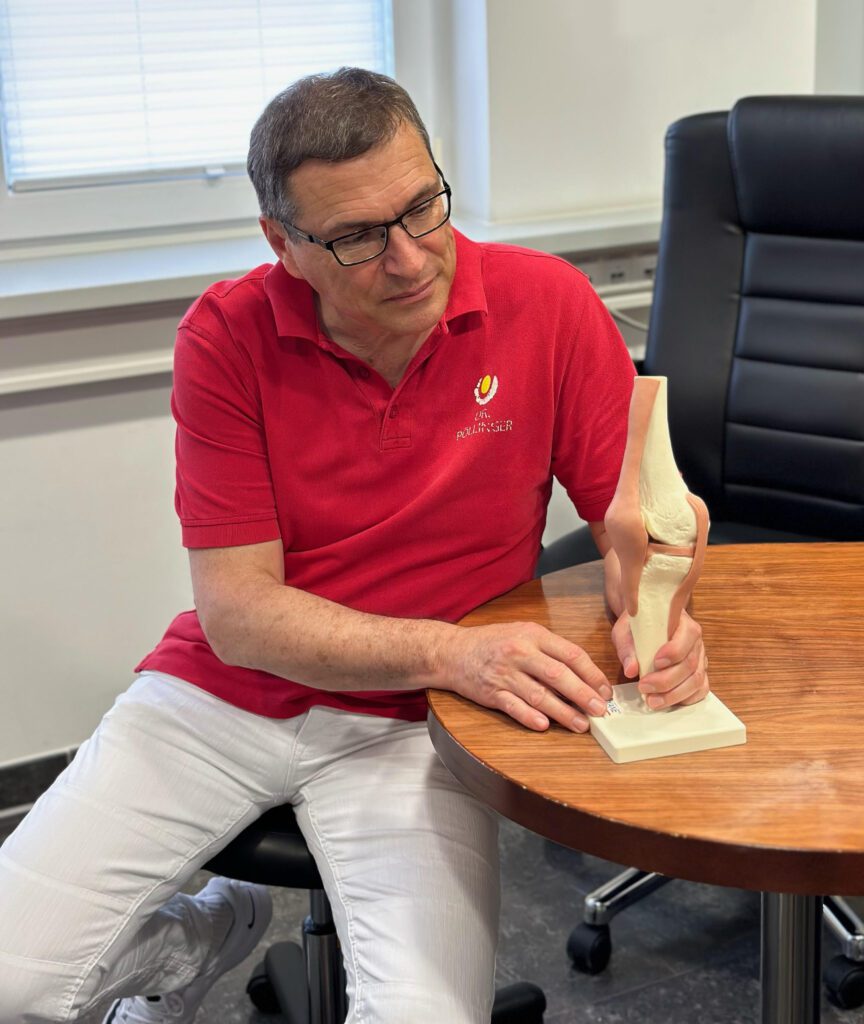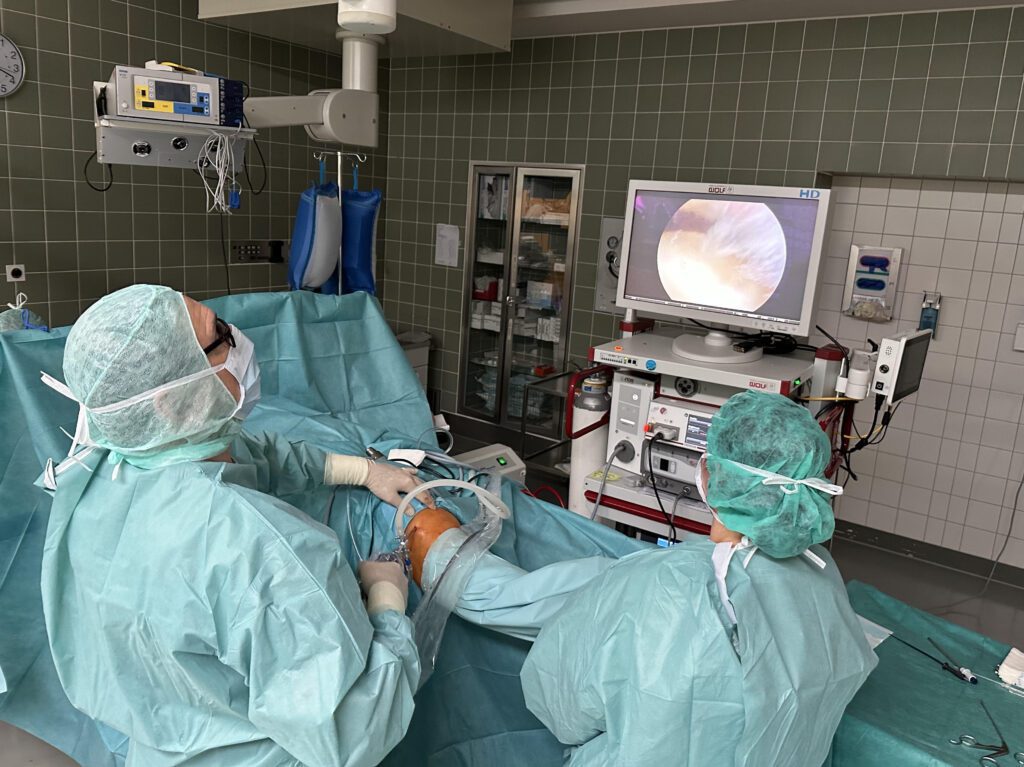Orthopedics is a medical specialty that deals with diseases, injuries and deformities of the musculoskeletal system. This includes bones, joints, muscles and tendons as well as ligaments and nerves. Orthopedics is a very important area of medicine because the musculoskeletal system plays a central role in our daily lives and can be influenced by many different factors.
In this article, we will take a closer look at orthopedics and explore the different aspects of this specialty.
What are the duties of an orthopedist?
Orthopaedists have the task of treating patients who suffer from diseases or injuries of the musculoskeletal system. This includes the diagnosis of diseases and injuries, the treatment of acute injuries and the prevention of further injuries or diseases. Orthopedists can use both surgical and conservative treatment methods to help their patients.
What are the most common diseases and injuries that an orthopedist treats?

Orthopedists treat a variety of diseases and injuries affecting the musculoskeletal system. The most common illnesses and injuries include:
Arthritis
Arthritis is an inflammatory disease that affects the joints. There are many different forms of arthritis, but they all cause pain and stiffness in the affected joints. Orthopedists can use a variety of treatments to relieve pain and improve joint mobility.
Disc prolapse
A herniated disc occurs when a disc in your back or neck becomes dislodged. This can cause pain and numbness in the affected areas. Orthopedists can use a variety of treatments to relieve pain and improve mobility in the affected areas.
Broken bones
Bone fractures can be caused by a variety of factors, including injury and osteoporosis. Orthopedists can use a variety of treatments to stabilize the bone and encourage growth.
What treatment methods does an orthopedist use?
Orthopedists can use both surgical and conservative treatment methods to help their patients. Conservative treatment methods include:
Physical therapy
Physiotherapy is a form of physical therapy aimed at improving the mobility and strength of the affected areas. Through targeted exercises and manual techniques, physical therapy can help relieve pain and speed up the healing process.
Medication
Orthopedists can prescribe various medications to reduce pain and inflammation. These include anti-inflammatory drugs, pain relievers, and muscle relaxants.
Injections
Orthopedists can give injections to the affected areas to reduce pain and inflammation. These include corticosteroid injections, hyaluronic acid injections, and PRP (platelet-rich plasma) injections.

Surgical treatment methods include:
Arthroscopy
Arthroscopy is a minimally invasive surgical procedure that involves making a small incision to insert an arthroscope. The arthroscope is equipped with a camera and special tools that help the surgeon see and treat the affected areas.
Joint replacement
If a joint is severely damaged or destroyed, a joint replacement may be necessary. Here, the damaged joint is replaced with a prosthesis to reduce pain and restore mobility.
Spine surgery
Orthopedists can also perform spinal surgery to treat problems like herniated discs, spinal stenosis, and vertebral fractures.
What are the risks of orthopedic treatment?
As with any medical treatment, there are risks with orthopedic treatments. These may vary depending on the type of treatment. Potential risks include infection, bleeding, nerve damage, and allergic reactions to drugs or anesthesia. It is important to discuss these risks with your orthopedist before undergoing any treatment.
How to maintain musculoskeletal health?
There are many ways to maintain musculoskeletal health. These include regular exercise, a healthy diet, adequate rest and sleep, weight management, and avoiding smoking and excessive alcohol consumption.
Conclusion
Orthopedics is an important branch of medicine that focuses on the diagnosis, treatment and prevention of diseases and injuries of the musculoskeletal system. Orthopedists can use both conservative and surgical treatment methods to help their patients. It is important to understand the risks of orthopedic treatment and to discuss them with your orthopedist. Musculoskeletal health can be maintained through regular exercise, a healthy diet, adequate rest and sleep, weight management, and avoiding smoking and excessive alcohol consumption.

Frequently Asked Questions
1. When should I see an orthopedist?
You should see an orthopedist if you have pain or discomfort in your joints, muscles, or bones that lasts for more than a few days or gets worse. A visit to the orthopedist is also advisable in the event of injuries or accidents affecting the musculoskeletal system.
2. How long does orthopedic treatment take?
The duration of orthopedic treatment depends on the type and severity of the disease or injury. Conservative treatment methods, such as physical therapy, can take several weeks or months, while surgical treatments can require a longer recovery time.
3. Can I play sports after orthopedic surgery?
After orthopedic surgery, it is important to give yourself adequate time to recover and rehabilitate before returning to physical activity. Your orthopedist will give you recommendations on when and what activities you can resume.
4. What precautions can I take to avoid musculoskeletal injuries?
To avoid musculoskeletal injuries, it is important to engage in regular physical activity, eat a healthy diet, get adequate rest and sleep, maintain an appropriate weight, and avoid smoking and excessive alcohol consumption. It is also advisable to protect yourself adequately during sports or physical activities, for example by wearing the right equipment.
5. How do I find the right orthopedist for me?
Finding an orthopedist who has experience and expertise in your specific field is important. Ask friends and family for recommendations, and look online for reviews and testimonials. Make sure the orthopedist you choose is able to treat your specific needs and concerns.